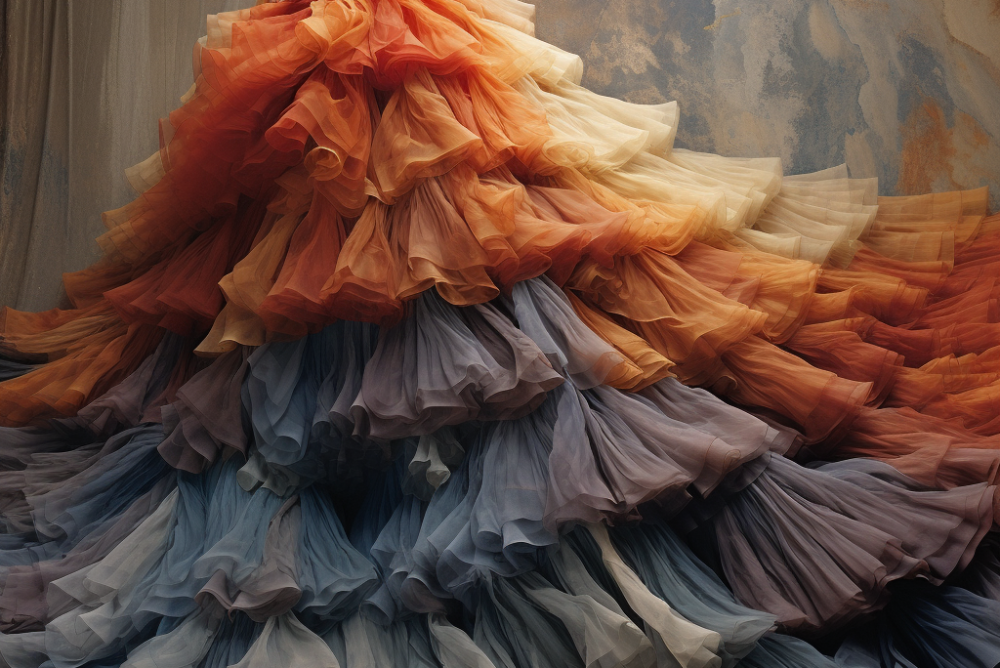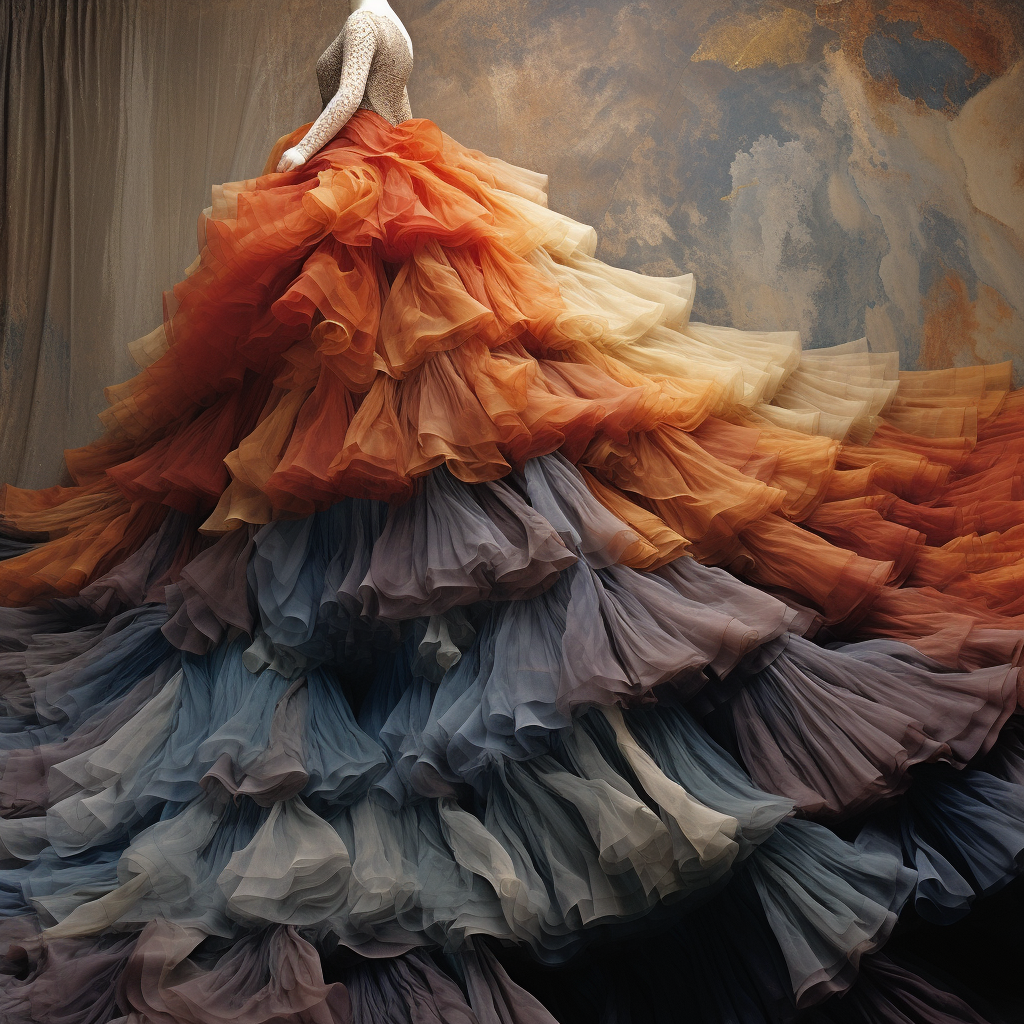Exploring the Fundamentals of Woven Fabric Structures and Techniques


Fabric is an integral part of our everyday lives. From the clothes we wear to the towels we dry with, the fabrics that surround us are made using different weave structures that give them distinct characteristics. The way yarns are interlaced with one another creates fabrics with unique properties that make them suitable for different purposes. Understanding the fundamental weave structures is key to selecting the appropriate fabric for any given application.
In textiles, there are three basic weave structures that form the foundation for countless fabric varieties – plain weave, twill weave, and satin weave. Each weave structure interlaces the warp and weft yarns in a different way, producing fabrics with distinctive visual and physical qualities. Beyond the basic weaves, more complex techniques such as crepe, jacquard, and dobby weaving create even more diversity in fabric construction and appearance.
This article will provide an overview of the most common types of woven fabric structures, explaining the features of each weave and providing examples of fabrics that utilize those techniques. We’ll examine plain, twill, satin, crepe, basket, and jacquard weaving, outlining the characteristics and applications of each. With an understanding of the fundamentals, we can make informed choices about fabrics for apparel, home furnishings, and industrial uses. The nuances of woven fabrics are truly fascinating, and a grasp of the basics helps unlock their potential.
Now that the stage is set, let’s explore the ubiquitous plain weave and its many uses.
Plain Weave
The plain weave structure is the most basic of woven fabric designs, but its simplicity should not be underestimated. Alternating the interlacing of the warp and weft yarns in a one-over, one-under pattern creates a balanced, smooth fabric with a flat appearance. The Plain weave can manifest in a spectrum from sheer, lightweight voiles to crisp, sturdy poplins.
In a plain weave fabric, each warp thread passes alternately over and under each weft thread in a regular, repeatable sequence. Warp and weft yarns maintain their parallel orientation without twisting around one another. This over-under interlacing creates a somewhat loose construction with inherent drape and flexibility. The balanced interplay of warp and weft provides excellent strength and durability in plain weave fabrics.
A wide variety of fabrics fall under the plain weave umbrella, including:
Voile - Sheer, lightweight, almost transparent plain weave fabric with a crisp hand. Used for blouses, dresses, curtains.
Muslin - Medium-weight, low-count cotton fabric with a soft drape. Used for quilting, fitting garments, upholstery lining.
Poplin - Sturdy, durable plain weave fabric with a flat, papery texture. Used for shirts, dresses, sportswear.
Cheesecloth - Lightweight, loosely woven plain weave cotton fabric. Used for straining, wrapping, polishing.
Organza - Crisp, sheer plain weave silk fabric. Used for evening wear, trimmings, crafts.
The versatility of the plain weave technique makes it the most widely used weave structure for apparel and home textiles. Adding textural elements like nubs and slubs expands the design possibilities while maintaining the balance inherent to plain weaving. This most basic interlacing of threads lays the foundation for an abundance of creative fabric applications.
Twill Weave
The twill weave structure introduces visual interest and versatility beyond the plain weave. In a twill weave, warp and weft yarns are interlaced in a progressive “step” pattern, creating distinct diagonal lines across the fabric face. The offset interlacing of threads produces a soft, pliable fabric with dimension and texture. Twill weave fabrics drape well and hug the body, making them ideal for clothing and upholstery.
In constructing a twill weave, the weft yarns pass over one or more warp yarns before going under one or more yarns. This stepping sequence repeats consistently across the weave pattern, forming discernible diagonal lines. The “wale” is the characteristic diagonal pattern that distinguishes twills from plain or satin weaves. Common twill weave variations include the 2/1 twill with warp floats every other yarn, and the 3/1 twill with warp floats every three yarns.
Popular fabrics constructed with a twill weave include:
Denim - Rugged, durable cotton twill fabric woven with indigo dyed warp yarns. Classic for jeans.
Gabardine - Hardwearing worsted twill fabric with a flat diagonal rib pattern. Used for suits, uniforms.
Flannel - Soft, brushed twill fabric made from wool, cotton, or synthetic fibers. Used for cold-weather shirts and sleepwear.
Houndstooth - Broken check or “pepita” twill fabric woven in a black-and-white geometric pattern. Used for suits, hats, and accessories.
The diagonal structure of twill fabrics allows them to drape while maintaining shape in garments and upholstery. Twill weaves have an elasticity that creates form and dimension while providing comfort and freedom of movement. With outstanding utility from denim to houndstooth, the twill technique brings visual drama beyond the plain weave.
Satin Weave
Satin fabrics have a distinctive soft, luxurious glow and drape that flows gracefully across the body. The satin weave technique creates this luminous, elegant texture using warp or weft “floats” woven over multiple threads. Unlike plain or twill weaves, a satin fabric has limited interlacing between the warp and weft, allowing the floats to stand out on the fabric face.
In a satin weave, four or more warp yarns float over a single weft yarn before interlacing. This long repeat creates the smooth, shiny surface and supple drape prized in satin fabrics. The backside reveals short weft floats as longer warp threads dominate the fabric face. Variations in the float sequence yield different satin weave patterns.
Common types of satin fabrics include:
Satin - Has a lustrous front and dull back. Made of silk, polyester, or nylon. Used for evening gowns, bed sheets.
Sateen - A cotton fabric with high luster derived from long weft floats. Used for dresses, blouses, bedding.
Antique Satin - Reversible satin with luster on both sides. Dense, durable, and ravel resistant. Used for formalwear, bridalwear.
Duchess Satin – Dense, heavyweight satin with a lustrous ribbed pattern. Used for couture fashion, bridal gowns, eveningwear.
Satin's radiant elegance comes from the interplay of light across the smooth, floating yarns woven with precision. The technique produces a supple drape, luminosity, and opulence that has made satin a fabric of luxury. From lingerie to formalwear, satin's sheen adds a sensual, glamorous flair.
Crepe Weave
Crepe fabrics have an unmistakable wrinkled texture and lightweight drape. The crepe weave technique produces this characteristic pebbly surface and soft, stretchy hand. Crepe fabrics are created by alternating S and Z twist yarns in the warp and weft. This arrangement interlocks the angled threads, forming a three-dimensional crimped pattern with ripples across the fabric face.
There are two main methods of constructing crepe fabrics:
Hard Crepe - Uses high twist yarns interlaced in a plain weave. The discrepancy in yarn tension causes puckering of the weave structure.
Crepe de Chine - Alternates S and Z weft yarns around warp yarns in a twill progression. The tension variation between yarns creates textbook crepe texture.
Popular crepe fabrics include:
Crepe de Chine - Lightweight, pebbly crepe in silk or synthetic fibers. Used for blouses, dresses, lingerie.
Crepe Georgette - Sheer, springy crepe with a crinkled texture. Used for evening wear, blouses.
Crepe Charmeuse/Back Crepe - Smooth, matte finish crepe used for dresses, sportswear.
Crepe Chiffon - Lightweight, translucent crepe fabric. Used for blouses, scarves, evening wear.
The creped surface hides wrinkles and adds flowy movement to garments. Crepe’s elasticity and shape retention make it suitable for draping and gathered detailing. From romance to mourning, crepe’s wrinkled beauty has symbolized many facets of fashion.
Basket Weave
The basket weave structure consists of two or more warp yarns alternating with two or more weft yarns in a simple checkerboard pattern. Like strands in a basket, the interlaced yarns create a flat, reversible fabric with a rectangular motif. Basket weave fabrics have a loose, somewhat textured construction but with balanced drape and durability.
In traditional basket weave, two warp yarns pass over, then under two weft yarns in a regular over-two, under-two sequence. This two-over, two-under interlacing is sometimes called “plain basket weave.” Variations like monk's cloth use three or more yarns in both directions for a more textured look.
Common basket weave fabrics include:
Monk's Cloth - Heavy, nubby basket weave fabric often made of wool. Used for rugs, upholstery, outerwear.
Hopsack - Loose basket weave fabric blended with cotton, wool, or synthetics. Used for suits, dresses, sports coats.
Panama - Reversible, open basket weave fabric used for hats and summer suiting.
Osnaburg - Coarse, dense basket weave cotton fabric used for work clothes, curtains, upholstery.
Basket weaves bridge the gap between basic plain weaves and more intricate jacquard designs. The technique adds durability and visual interest through simple checkerboard patterning. With its rustic, textural aesthetic, basket weave brings dimensionality and charm to everything from apparel to home goods.
Jacquard Weave
Jacquard weaving represents the pinnacle of woven textile design and intricacy. Sophisticated jacquard looms allow the creation of complex, ornate fabrics with woven-in decorative motifs and patterns. Brocades, damasks, tapestries, and matelassé fabrics all rely on the technical brilliance of the jacquard weaving technique.
Jacquard weaving uses a chain mail-like mechanism that individually controls each warp thread on the loom. This modular system enables infinite control of interlacing placements, facilitating intricately patterned fabrics. The jacquard head reads punched cards with programmed weaving instructions, telling each thread how to maneuver independently.
Common jacquard-woven fabrics include:
Brocade - Decorative fabrics with raised, discontinuous woven designs in gold or silver threads. Used for upholstery, eveningwear.
Damask - Reversible fabrics with elaborate floral, paisley, or geometric designs. Used for upholstery, drapery, apparel.
Matelassé - Heavyweight jacquard with a blistered, quilted appearance. Used for bed coverings and formal upholstery.
Tapestry - Heavyweight, ornately patterned jacquard with interwoven decorative images. Used for wall hangings, handbags, apparel.
Jacquard weaving accelerated the Industrial Revolution, streamlining textile manufacturing with its innovative programmable loom. Today, haute couture fashion and luxury textiles alike rely on jacquard techniques to achieve stunning design feats. With its unparalleled intricacy and ornate details, jacquard weaving forever transformed the woven fabric landscape.

Conclusion
The nuances of woven fabric construction impart endless variety and possibility to textile design. From the ubiquitous plain weave to the opulent jacquard, each weaving technique creates fabrics with unique tactile and visual qualities. Mastering the fundamentals empowers fabric selection for any application, whether an elegant evening gown or a durable denim jacket. Beyond their beauty alone, woven structures determine a fabric’s drape, permeability, and performance. Blending weave ingenuity with an eye for aesthetics unlocks textile potential to meet every creative vision.





-500x500.jpg)
-500x500.jpg)
-500x500.jpg)
-500x500.jpg)
-500x500.jpg)